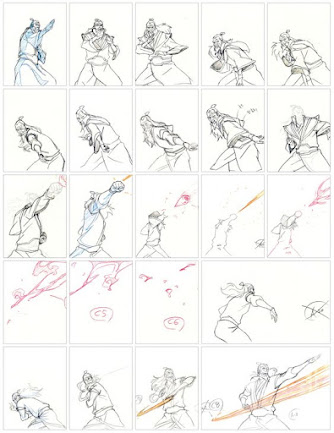Anime is a form of animation that originated in Japan and has become increasingly popular worldwide. It is known for its unique visual style, storytelling, and diverse range of genres, from action and adventure to romance and comedy.
Creating anime is a complex process that involves a team of skilled professionals, including writers, artists, animators, and sound designers. In this article, we'll explore the various steps involved in creating anime, from planning and storyboarding to animation and post-production.
1.Planning and Conceptualization
The first step in creating anime is to plan and conceptualize the series. This involves coming up with the overall concept, including the story, characters, settings, and other elements. In this stage, the creators need to decide on the genre, the target audience, and the format of the series. They may create storyboards and write scripts for individual episodes, outlining the plot and character development.
One of the unique features of anime is its emphasis on world-building, which involves creating a rich and immersive universe for the story to take place in. This can include designing unique settings, cultures, and technologies that are distinct from the real world. Creators may draw inspiration from Japanese mythology, history, or pop culture to create a unique and compelling world.
2.Storyboarding and Pre-Production
Once the concept and storyboards have been established, the pre-production stage begins. This involves creating rough sketches and layouts of each scene in the series, including the camera angles and character movements. Storyboards are essential to the anime production process, as they allow the creators to visualize and refine the story before the animation process begins.
During the pre-production stage, the character designs are also finalized, and the animators create detailed drawings of the characters' appearances, movements, and expressions. They may also create detailed backgrounds, props, and other visual elements that will appear in the series.
3.Animation
After the storyboarding and pre-production stages are complete, the animation process begins. This is the most time-consuming and labor-intensive part of creating anime, as it involves creating the final drawings and designs for the characters, backgrounds, and other elements of the series.
Traditionally, anime is hand-drawn by artists using pencil and paper. The animators create detailed drawings of each frame of the animation, which are then scanned and digitally colored to create the final animation. This process can take several months to complete, depending on the length and complexity of the series.
In recent years, many anime studios have adopted digital animation techniques, which involve using computer software to create the animation. This allows for greater flexibility and efficiency in the animation process, as well as the ability to create more complex and detailed visuals.
4.Voice Acting and Sound Design
Once the animation is complete, voice actors are hired to provide the voices for the characters. The voice acting is usually recorded in a studio, and the final recordings are synchronized with the animation. In Japan, voice acting is a highly respected profession, and many famous actors and actresses have made their careers in anime.
Sound design is also an important part of the anime production process. Sound effects and music are added to the anime to enhance the overall viewing experience. This involves creating and recording sound effects and composing original music for the series.
5.Post-Production and Editing
The final step in the process is post-production and editing, where all the elements of the anime are brought together and assembled into a cohesive final product. The editing process involves cutting and rearranging scenes, adding visual effects and transitions, and adjusting the pacing and timing of the series.
Post-production also involves adding subtitles or dubbing the anime into other languages for international audiences. This is a crucial step in the distribution and marketing of anime, as it allows the series to reach a wider audience around the world.
Conclusion
Creating anime is a complex and collaborative process that involves hardwork and dedication.











1 Comments
The soundtrack really adds to the overall feel of the anime.
ReplyDeleteDo leave a comment...